How does aphid appear on trees and how to get rid of it?
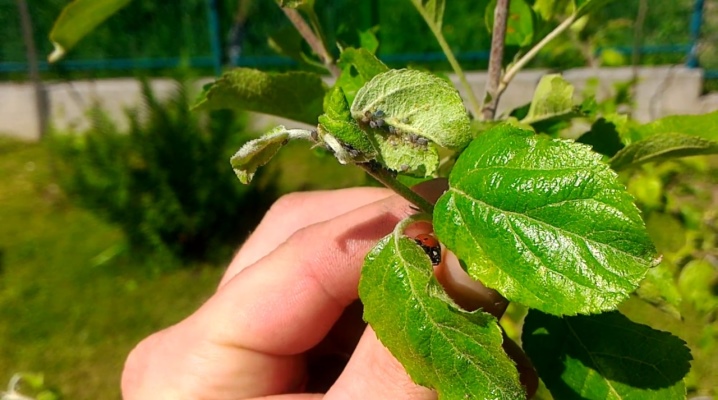
Aphids, despite their tiny size, are one of the worst enemies of horticultural crops. These pests not only deprive plants of vitality, feeding on their cell juices, but at the same time carry various viral diseases that pose a mortal danger to cultural plantings. The appearance of aphids on trees is an extremely alarming signal that requires urgent measures to be taken to destroy it. What means and methods should be used to combat aphids on trees? How to prevent its appearance on the site?
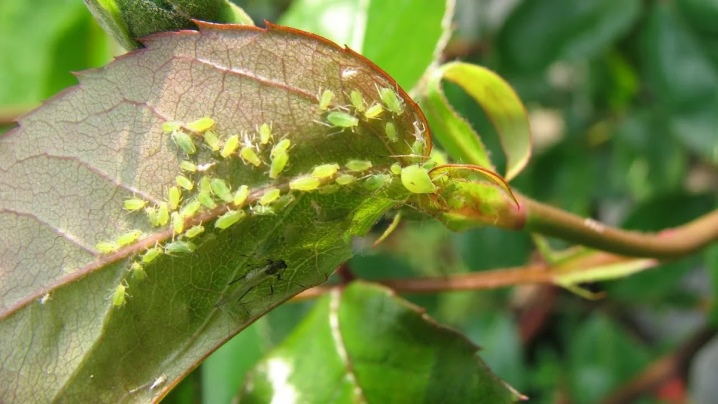
What does it look like and where does it come from?
Aphids are a very small insect with an oval or teardrop-shaped and most often translucent body, the size of which varies from 2 to 5 millimeters. In representatives of some species, the body length reaches 7-8 millimeters.
The color of the pest can be white, pale green, brownish brown, burgundy, sandy golden, dark blue, dirty gray and even black. It is noteworthy that very often the color of the insect corresponds to the color of its food substrate.
Visually, the aphid looks like a tiny bug with long and thin legs. The pest's mouth apparatus is a proboscis, with which the aphid pierces the surface of stems and leaves and sucks out cell sap.
The waste product of aphids is honeydew - a sweet solution secreted by the pest that attracts ants.
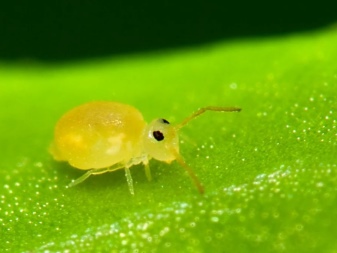
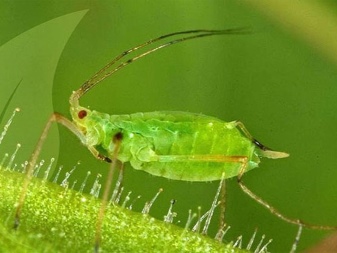
For garden trees, aphids are a serious danger. Eating on cellular juices, this pest disrupts the natural process of sap flow, as a result of which the foliage and young shoots of trees do not receive nutrients and begin to dry and turn yellow. At the same time, flowers wither on fruit trees affected by aphids, ovaries dry up, fruits become deformed and shrink. With a massive aphid infestation, young trees and seedlings can quickly die.
In most cases, aphids in the garden appear during migration from neighboring plots, the owners of which do not take any measures to destroy the pest. Besides, very often aphids enter the garden together with ants, with which they coexist safely. When moving from one garden plot to another, ants transfer the pest and its eggs with them to a new place of residence.
Another reason for the appearance of aphids in the garden is the planting of infected plants. When purchasing seedlings and seedlings "from hands" or from sellers with a dubious reputation, the gardener runs the risk of bringing the pest to his site along with the planting material. Considering that it is extremely problematic to remove aphids from the site, experienced gardeners recommend purchasing tree seedlings, as well as seedlings of any cultivated plants, only in licensed nurseries or from trusted suppliers with a good reputation.
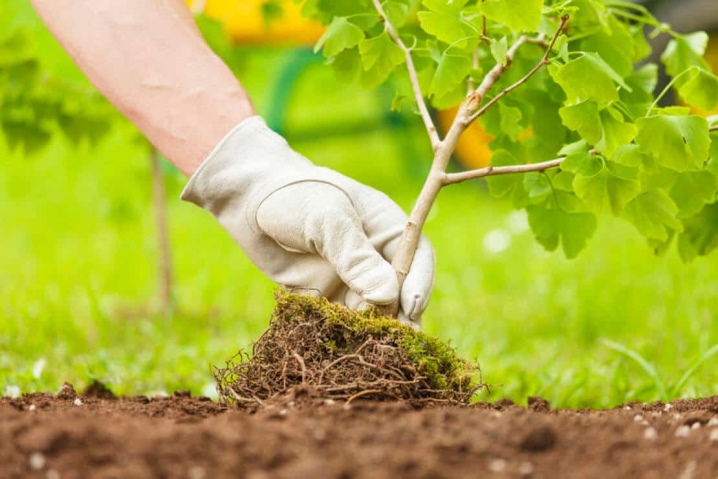
An indirect reason for the appearance of aphids in the garden is the neglect of preventive measures, which provide for the regular treatment of the garden with means that scare off the pest. In addition, illiterate or irregular gardening contributes to the appearance and spread of the insect. It is noticed that not only aphids, but also other dangerous pests appear very quickly in the cluttered and overgrown areas.
It should be noted that one of the biological features of aphids is their ability to rapidly multiply. So, only one female pest within 1-2 months is capable of giving birth to several hundred thousand (!) of its own kind.
Given this circumstance, the gardener, when he detects aphids in the garden, must immediately take the most decisive measures to destroy it.
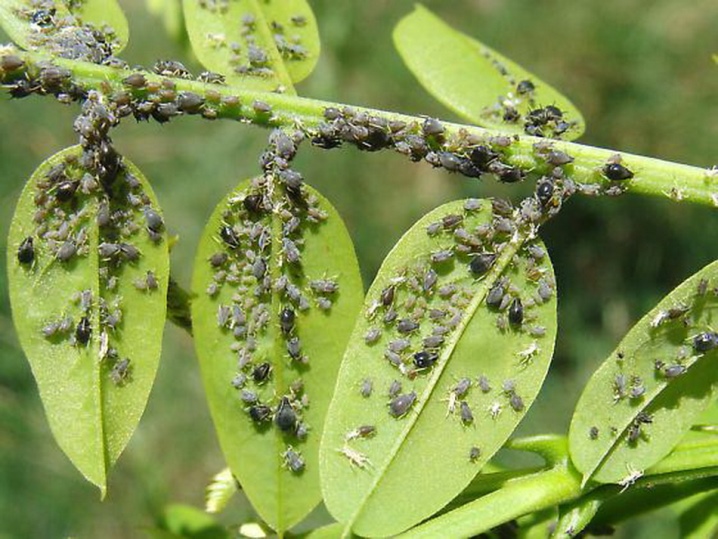
Chemical treatment
To destroy the pest, gardeners use various chemicals (insecticides) with which the affected trees are treated. Depending on the type of active substance (poison), insecticides have a contact, intestinal or contact-intestinal toxic effect on insects. The toxic substance, which is the active component of the drug, affects the pest in any of the above ways, paralyzing its vital systems. Fumigants, chemical preparations that poison the pest when it enters its respiratory system, act in approximately the same way.
Most often, gardeners poison aphids with the chemicals listed below.
- Fitoverm - a modern bioinsecticide used to combat various types of agricultural pests. The active component of the drug is Aversectin-C, a substance with a neurotoxic effect. To destroy pests, the affected trees are sprayed with a solution of the drug 2-3 times with an interval of 6-7 days. The death of insects usually occurs within 2-3 days. The drug demonstrates its maximum effectiveness on days 5-7. During the flowering period, the drug is not used.
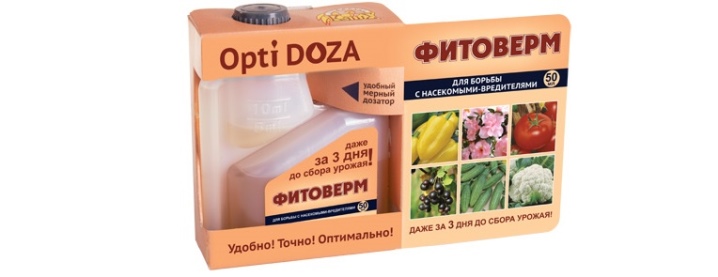
- "Fufanon" Is an effective organophosphate pesticide widely used in agriculture. The active component of the drug is malathion, which has a fumigant and intestinal toxic effect on the pest. To get rid of aphids in the garden, trees are treated with a solution of the drug 1-2 times at intervals. It is strongly discouraged to use this chemistry during flowering plants, when they attract bees and other beneficial pollinating insects to the garden. It is optimal to use this drug after the garden blooms (in the middle or at the end of June).
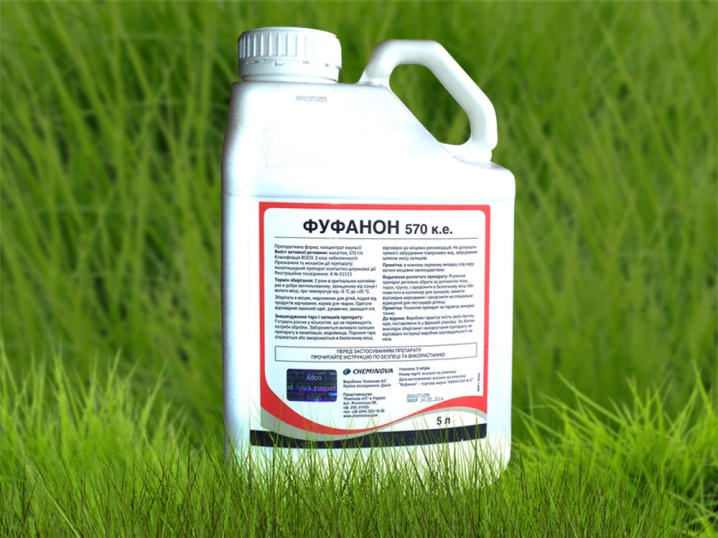
- Biotlin - a new generation insecticidal preparation that allows you to permanently remove aphids from garden trees. The active component of the drug is imidacloprid, which has a nerve-paralytic effect. It is noteworthy that this drug has a systemic effect: after spraying, it penetrates mainly into the green parts of plants, it accumulates in the cell juices. Accordingly, after the treatment of the affected trees, the aphids that settled on them and feeds on cell sap die very quickly. To obtain the desired effect, according to the manufacturer of the poison, it is necessary to process the trees once. At the same time, during the flowering period, the drug, as in previous cases, is not used, so as not to destroy the representatives of the useful entomofauna.
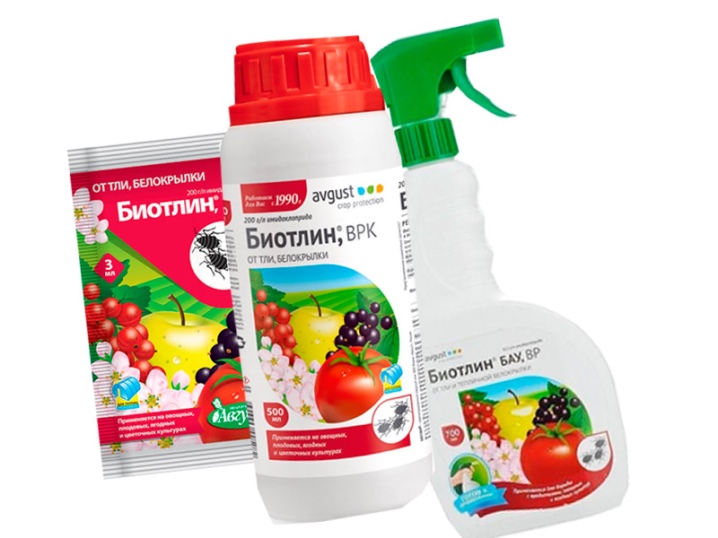
- "Aktara" - a very effective preparation with a wide spectrum of action, providing reliable protection of garden and agricultural plants from sucking and leaf-eating pests. It has an intestinal toxic effect on insects, paralyzing their vital systems. This insecticide penetrates into plant leaves, but hardly accumulates in fruits. The death of parasites occurs within 2-24 hours after the treatment of trees. The drug is highly toxic to bees, therefore, it is not used during the flowering period.
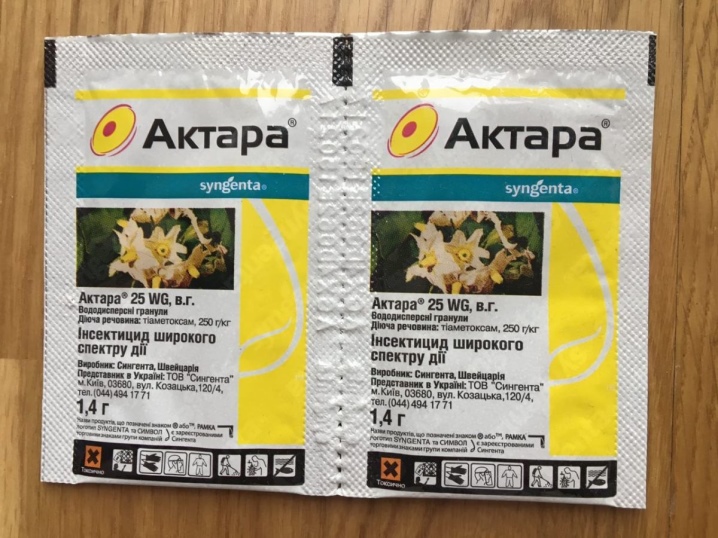
Treatment of garden trees with chemicals is carried out in dry and calm weather. Working solutions are prepared in strict accordance with the instructions, observing the recommended consumption rates of the drug and precautions. It is worth noting that many manufacturers do not recommend mixing chemicals with other pesticides (as some gardeners often do when preparing working solutions to enhance their toxic effect). Working solutions are used on the day of preparation. They are not subject to storage.
To destroy pest colonies, trees should be treated completely (branches, shoots, leaves, trunk). Even if aphids have been seen on individual trees, the entire garden is subject to processing, as well as plants located in the adjacent territories.
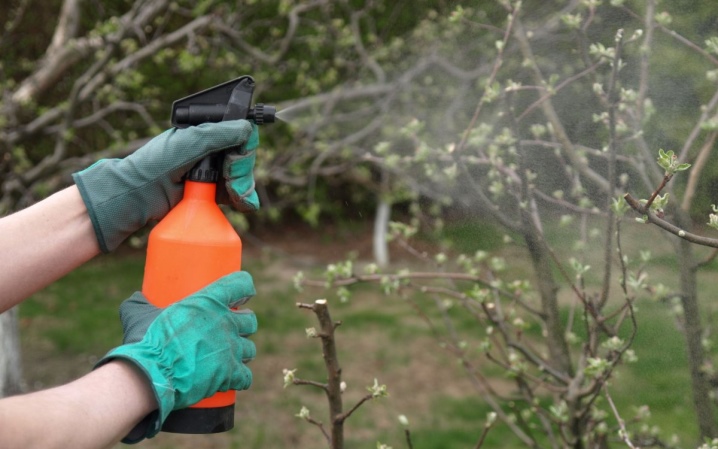
How to fight with folk methods?
Gardeners often use folk remedies for pest control in combination with chemicals (insecticides). Observations show that such an integrated approach makes it possible to make the fight against aphids even more effective.
Besides, traditional methods are often used by gardeners during the flowering period of trees, when the use of insecticides is undesirable. Folk remedies in this case allow you to resist the pest without harming beneficial insects.
Soda
To combat aphids on garden trees, both regular (baking) and soda ash are used. Experienced gardeners claim that the soda solution irritates the delicate bodies of aphids upon contact, forcing the pest to hastily retreat from the site. Plus, baking soda is the simplest, safest, and most effective remedy for powdery mildew, which often affects fruit trees. The use of a soda solution, thus, allows not only to effectively fight against aphids and other pests, but also prevents the appearance of powdery mildew (or at the same time heals trees from this disease).
To combat the pest, use a solution prepared from 4-5 tbsp. l. soda and buckets of water. The resulting composition should be thoroughly sprayed on both affected and healthy trees. Processing is best done in the morning and evening hours in dry and calm weather.
To obtain the desired result, processing is carried out 2-3 times with an interval of 3-4 days.
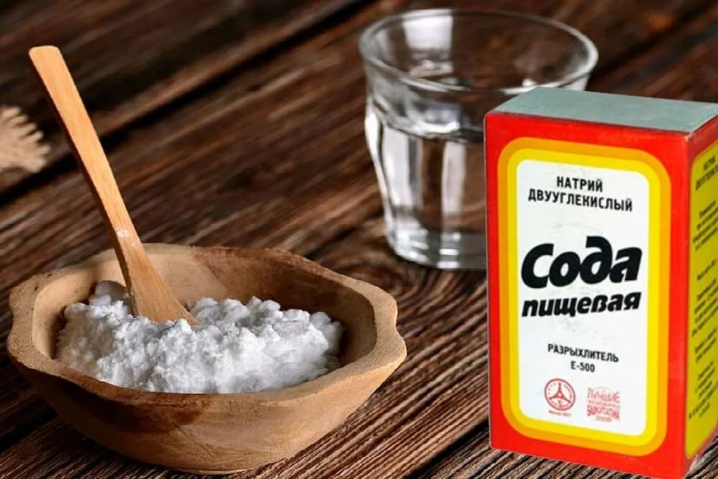
When spraying garden trees in wet weather, the effectiveness of the above solution is sharply reduced. In this case, it is better to use a soap-soda solution prepared from a bucket of water, 100 grams of laundry or tar soap and 2-3 tbsp. l. soda. The advantage of using this composition is that the soap diluted in water, when it gets on the leaves and the pests themselves, forms a film, due to which the product remains on the treated tree (leaves, branches, crown) much longer.
However, gardeners remind, When using this anti-aphid product, it is imperative that you adhere to the recommended soap dosage without exceeding it at your discretion. Otherwise, the soap film will turn out to be very dense, which is likely to harm the green inhabitants of the garden.
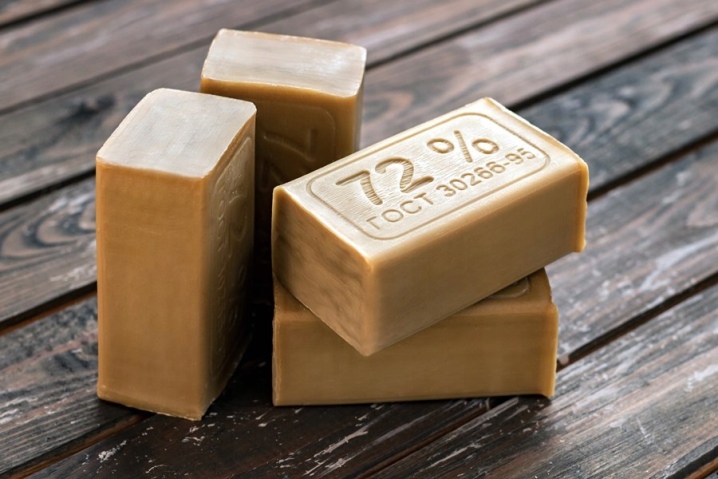
Wood ash
Using wood ash, summer residents not only scare away aphids and many other pests from their garden for a long time, but also contribute to its recovery. It is known that ash is one of the simplest and most affordable complex fertilizers containing over 30 valuable microelements. Thus, during the processing of the garden with ashes from aphids, the owner of the backyard can simultaneously meet the needs of trees for easy and safe fertilizing and, as a result, increase their yield.
To treat the garden from aphids, carry out:
- spraying trees with ash solutions;
- dusting with a mixture of ash and other components.
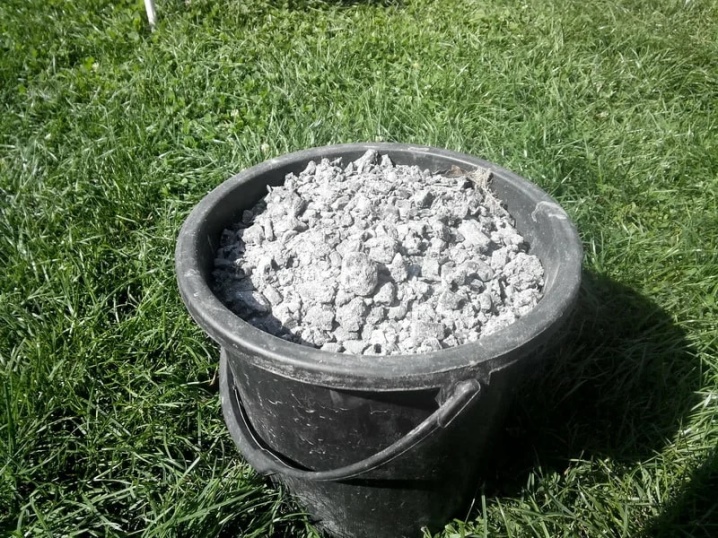
To prepare an ash solution against aphids for spraying garden trees, you must:
- dissolve 50-70 grams of laundry soap in a bucket of moderately warm water;
- add 2-3 cups of well-sifted wood ash to the solution.
This solution should be sprayed on the affected trees and plants located next to them. It should be noted that during the flowering of the garden, this tool should not be used, since the aroma of soap scares away bees and pollinating insects.
Ash for the preparation of solutions or medicinal powder is used exclusively with wood.It is not allowed to use for these purposes ash obtained as a result of incineration of household waste of inorganic origin.

To prepare ash powder, which is very good at fighting pests, it is necessary to pour wood ash, mustard powder and hot red pepper in a 1: 1: 1 ratio into a clean bag made of dense fabric. All ingredients are thoroughly mixed, after which the affected trees are powdered with the resulting powder mixture. It is extremely important during processing to adhere to appropriate precautions: use a respirator, gloves and clothing to protect the skin from the ingress of the prepared powder.
The mustard and pepper, which are part of the ash powder, will scare off the pest due to its pungent smell and irritating effect. To enhance the effect, dusting is repeated after 2-3 days.
Dust trees should only be in calm weather. After dusting the garden, it is strongly recommended that you wash your work clothes and take a shower.


Herbal infusions
Another simple and environmentally friendly way that allows you to remove aphids from garden trees in summer involves the use of various herbal infusions, which are easy to prepare yourself at home. Some of them have pungent and unpleasant odors that the pest is afraid of, others create extremely uncomfortable conditions for its existence.
To prepare one of these infusions, experienced gardeners recommend using tomato tops, which with its smell scares off the pest. The tops should be filled in a three-liter container and filled with hot water. Further, after a day, the infusion should be filtered and 2 tbsp. l. dishwashing liquid or laundry soap shavings.
The resulting infusion on a dry, windless day must be thoroughly sprayed on the affected trees, not forgetting to process the branches and trunks. After 4-5 days, it is advisable to repeat the procedure.
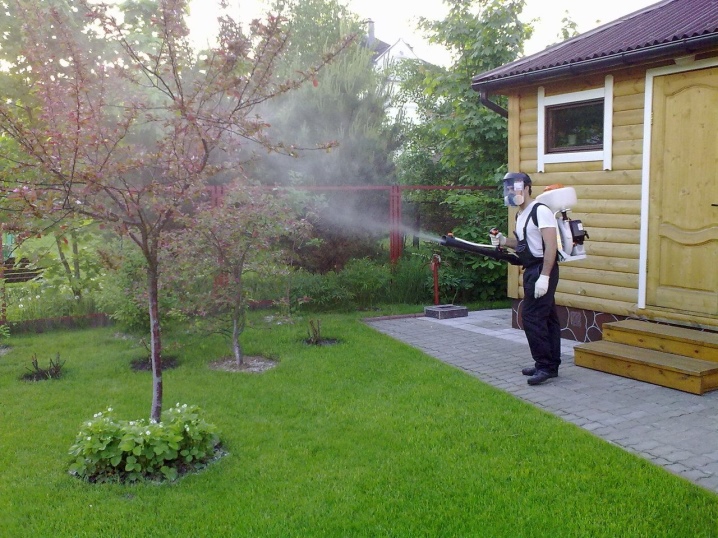
It should also be noted that instead of tomato tops, you can use potato tops with the same success. After the pest disappears from the site, it is recommended to rinse the trees in the garden from the remaining soap solution with water from a hose.
Very effective in the fight against aphids are infusions prepared on the basis of wormwood, horseradish leaves, celandine herb, tansy, onion or garlic husks. These infusions, possessing pungent and strong odors, are also capable of creating extremely uncomfortable conditions for the pest.
To prepare the infusion, 0.5-1 kg of plant materials are used (from the above options), the grass is poured with a bucket of boiling water. Insist on the remedy for several hours. Further, the resulting infusion is used for spraying affected and healthy trees. The remains of the infusion are poured into the ground in the near-trunk circles.
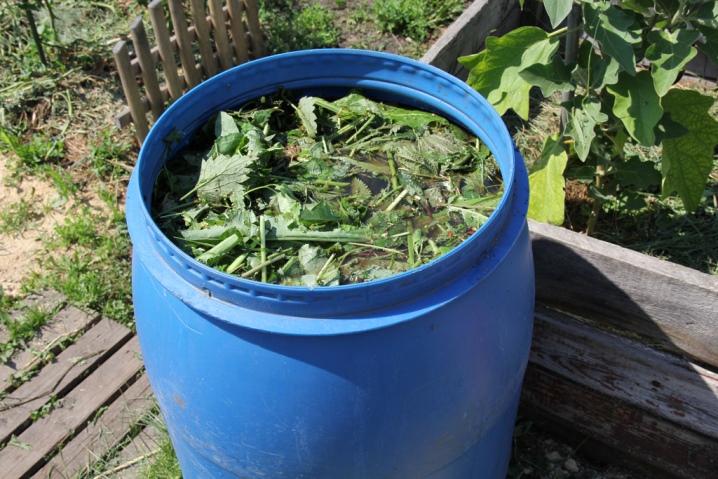
Birch tar
To prepare a tar solution from aphids, 15 grams of tar and 50 grams of laundry soap are diluted in a bucket of water (both components, if absent, can be replaced with half a bar of tar soap). With the resulting composition, it is necessary to process all the trees in the garden and water the ground under them.
A mixture of tar and wood ash is used to scare off pests. The resulting mushy mass is coated with tree trunks and the surface of the branches.
It should be noted that tar, which has antiseptic properties, helps protect trees not only from aphids, but also from pathogens of various bacterial diseases.
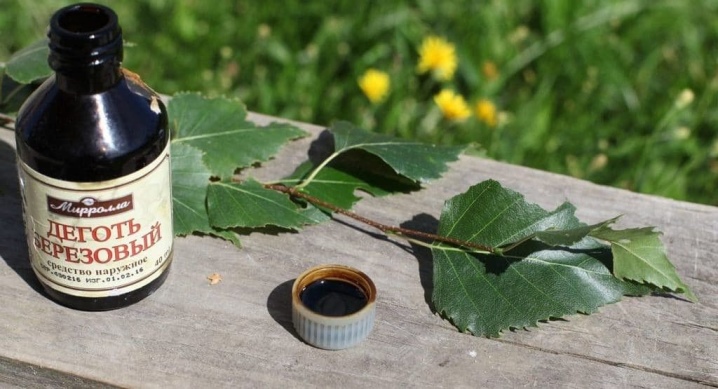
Ammonia
A solution of ammonia is allowed to treat garden trees from aphids at any time, including the flowering period. For its preparation, 50 ml of ammonia and 1 tbsp are diluted in a bucket of water. l. shavings of laundry soap. The resulting solution is sprayed onto the crown and trunks of affected trees. Do not store the rest of the solution.
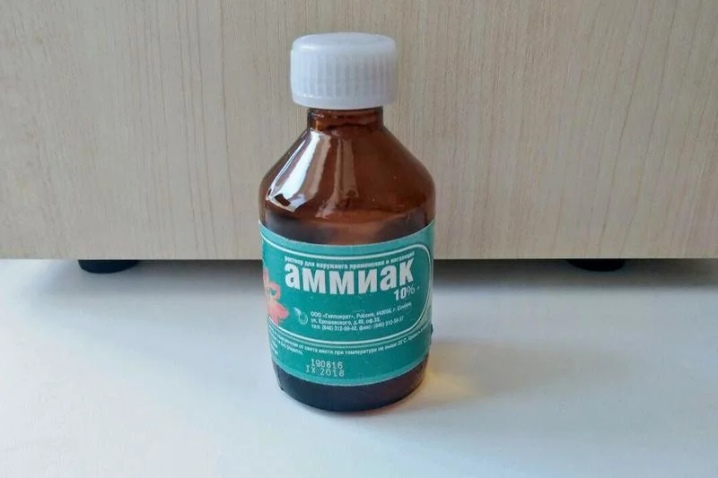
Vodka, moonshine and ethyl alcohol
Strong alcoholic drinks, like pure ethyl alcohol, can also significantly speed up the process of getting rid of aphids. Alcohol-containing working solutions have an unpleasant smell for the pest, and if they get on its delicate body, they cause burns. To prepare an alcohol solution, it is necessary to dilute 2 half-liter bottles of vodka or moonshine (or 1 half-liter bottle of alcohol) in a bucket of water, add 1 tbsp. l. shavings of tar soap and spray the trees.
It is recommended to repeat the treatment after 2-3 days.
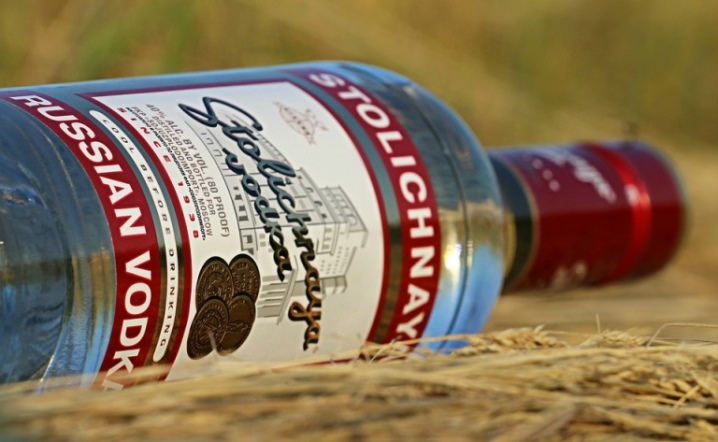
Vinegar
Table, apple cider, wine vinegar can save the garden from aphids in a fairly short time. Like alcohol-containing solutions, it has an unpleasant, pungent odor and also causes irritation and burns when a pest hits the body.
To prepare the working solution, it is necessary to dilute 4 tbsp in a bucket of water. l. essences or 10 tbsp. l. 9% vinegar, then thoroughly spray the entire garden. After 2-3 days, the procedure should be repeated.
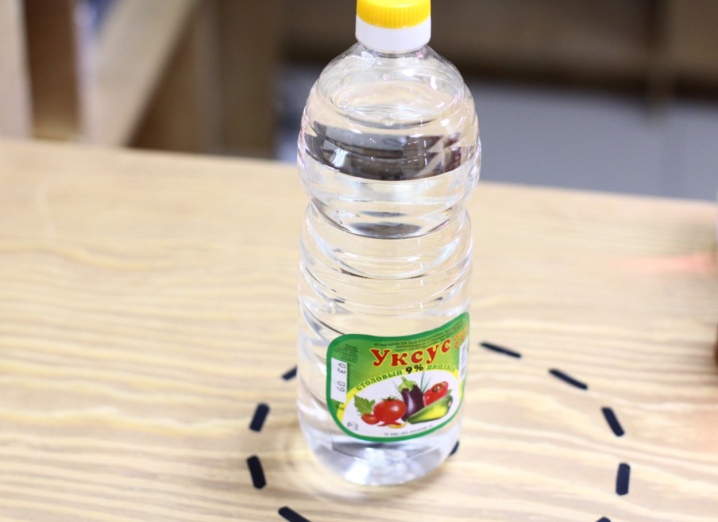
Vegetable oil
Sunflower oil mixed with water, when it gets on leaves affected by aphids, forms a slippery film that does not allow the pest to suck out cell juices. For processing, an oil-water mixture prepared from 10 liters of water, 200 g of soap chips and 200 ml of oil is used.
It is impossible to abuse this remedy, since a dense oily film, growing, will interfere with the natural respiration of trees.
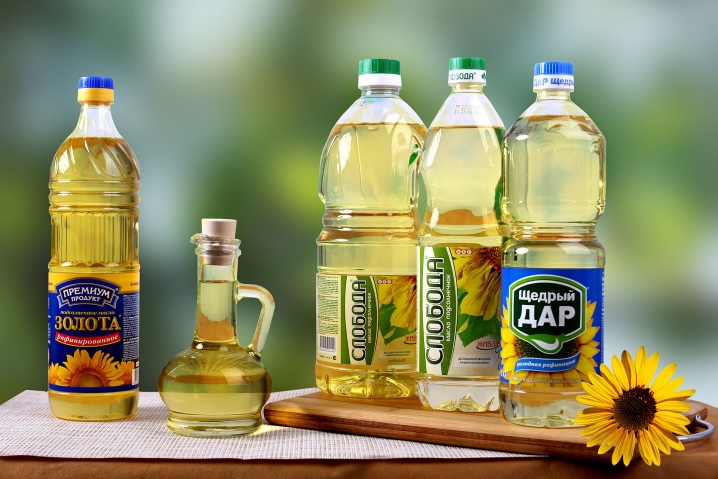
Helpful hints
To protect your site from the invasion of aphids, it is necessary to create conditions unfavorable for the pest. So, observations show that aphids prefer to bypass areas where fragrant flowers and herbs grow: tansy, marigolds, geraniums, chrysanthemums, fennel, calendula, coriander, mint. In addition, the scent of these plants attracts ladybirds, the main enemies of aphids, to the site. In addition to ladybirds, other beneficial insects are also dangerous to aphids: lacewings and hoverflies.
Experienced gardeners argue that it is better to remove aphids together with ants, keeping a limited population of the latter on the site. It was noticed that the rapid increase in the number of ants in the area almost always precedes the appearance of aphids, the colonies of which migrate with them. Given this circumstance, it is necessary to control the number of ants on the site, not allowing it to grow.
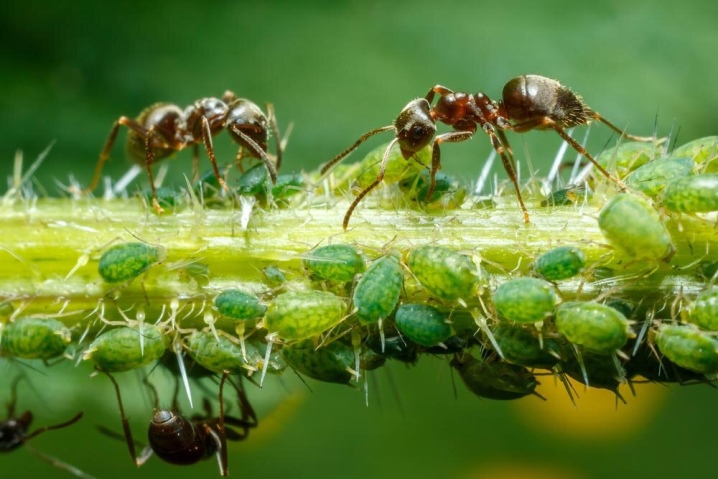
Birds also help prevent the appearance of aphids on the site. To attract them to your garden, you should hang drinkers and feeders with grain on the trees.
Before treating the garden from aphids, you should examine the affected trees, remove leaves and young shoots that are severely damaged. The removed parts of the affected plants must be burned. It is categorically not allowed to use them for laying in a compost heap.
It is important to bear in mind that insufficient or illiterate maintenance of the garden contributes to the appearance of aphids. For this reason, weeds and root shoots on which the pest hibernates should be promptly destroyed on the site.
Before the onset of cold weather, it is necessary to remove all anthills from the site (or stir them up), since aphid colonies in them also survive the winter period safely.
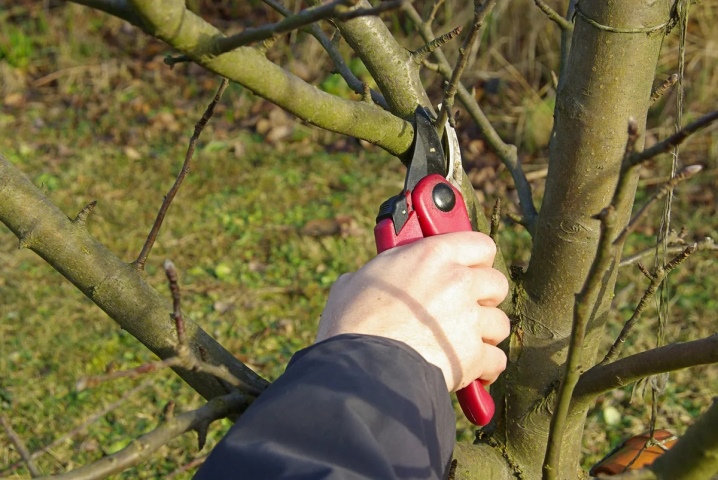
See below for tips on aphid control.













The comment was sent successfully.